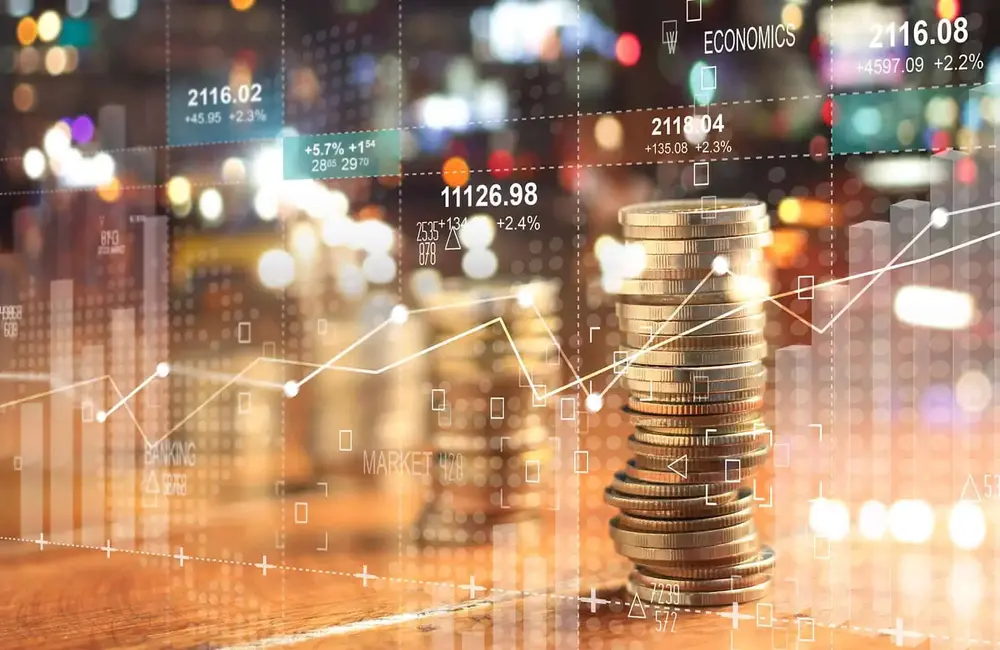ASX futures fell 7 points or 0.1% to 7417 at 8. The data could indicate a lower opening on Wednesday itself, with futures down around 0.05% at 1.00am. The S&P 500 fell 0.3 percent overnight, after being up as much as 1.3 percent at one point during the session. The Dow Jones Industrial Average fell 0.3%. The technology-focused Nasdaq Composite was off 0.3%.
U.S. stock markets were up earlier in the day after fresh price data released before the market bell suggested inflation may be peaking. Consumer prices rose 8.5% in March versus a year earlier, higher than February’s 7.9% reading in part because of a sharp increase in gasoline prices. But the “core” measure that excludes volatile items went up 0.3% from the previous month, below economists’ expectations and less than the 0.5% recorded in February.
“Those numbers were, as you will recall, incredibly high,” said Gargi Chaudhuri, the head of iShares Investment Strategy Americas at the asset manager BlackRock. [Inflation data] is now leaning, I think, toward, if not peak then at least near peak.”
Bonds soared as investors wagered that fewer interest rate hikes would be needed to tame inflation. Yields on US 10-Year Treasury Notes dropped to 2.72% compared to 2.78% the previous day. Yields on shorter duration bonds also gained, with the yield on 2 year Treasury Notes edging lower to 2.495%. When prices rise, yields fall.
Gains disappeared by the closing bell as the price of crude oil soared, raising fears that rising energy prices could keep inflation high. Brent crude gained over US$100, climbing 6.3% to US$104.64.
In separate remarks, Russian President Vladimir Putin said peace negotiations with Ukraine are in “dead end” public comments overnight as he promised to continue the invasion.
The S&P/ASX 200 finished 0.4% lower at 7454.0 after a choppy session that ended with all sectors in negative.
Health care stocks were getting hammered, down 1.4 percent, while technology stocks continued to weigh on the benchmark, off 0.9 percent. Imugene was the worst performer on the day, down 8.7 per cent, with ResMed and CSL down 3.4 per cent and 1.3 per cent respectively.
Buy-now-pay-later stock Zip fell 5.7% and Appen was down 3.1%. Nonetheless, Iress rose 1.7% after it said it would no longer pursue a divestment of its U.K. mortgage business.
Pendal dipped 0.2% after it said it would move to reject a takeover proposal from Perpetual, which also fell 0.4%.
City Chic was another underperformer, down 7.9% for the day.
Iron ore gained 2.8% to US154 in commodity markets 85 per tonne, while gold futures dropped 0.3% to $1,970.60.
Australian 10-year bond yields climbed to 3.07% in local bond markets.
At 8. The currency traded at 74.51 per dollar at 10:00 a. The WSJ Dollar Index, which measures the US dollar against 16 other currencies, climbed to 92.58, the highest level since May 2020.
Asia
Chinese stocks finished in the green as the country appeared to ease some Covid-19 restrictions in Shanghai, Oanda analyst Jeffrey Halley wrote in a note. “In Shanghai, curbs have been eased for roughly half of the populace. If an apartment complex has had no cases for two weeks, residents can begin moving around,” and the positive sentiment that follows is pushing shares higher, Halley said. Consumer stocks such as liquor makers ended the day in positive territory. Index heavyweights Kweichow Moutai was up 3.6%, Wuliangye Yibin was up 6.6% and Luzhou Laojiao gained 7.2%.
The Shanghai Composite Index was up 1.5% to 3213.33, the Shenzhen Composite Index was up 1.8% to 2047.88 and third board ChiNext Price Index rose 2.5% to 2523.69.
The Hang Seng Index in Hong Kong adds 0.3% to 21279.18, thanks to tech stocks. The index may trade higher today, after Chinese securities regulator said it would commit to broadening access to capital markets, KGI Securities analysts write. KGI adds that Chinese regulators have also approved the first batch of monetized online games since July, indicating the range of regulatory controls over the internet segment may be relaxing.
Top performers include NetEase, which advances 4.5%, and JD.com, up 2.9%. Alibaba Health Information Technology rises by 2.2%. The Hang Seng Tech Index is up 1.3% at 4246.92. Among decliners are Wuxi Biologics, 1.3% weaker.
Japanese stocks fell, pressured by shipping and machinery stocks, as worries remained about supply-chain disruptions and slower trade. Shares of major shipper Mitsui O.S.K. Lines fell 6.1% and industrial-robot maker Fanuc was down 5.5%. The Nikkei Stock Average dropped 1.8% to 26334.98. A focus for investors is the war in Ukraine, Covid-19 lockdowns in Shanghai and implications for global trade.
Europe
European markets dipped as banks retreated, even as Wall Street traded higher early in its session. The pan-European Stoxx Europe 600 and French CAC 40 shed 0.4%, while the German DAX lost 0.5%.
European banks dropped on news that US investor Capital Group had shed stakes in Germany's Deutsche Bank and Commerzbank.
“US markets have opened a little higher in early trade after the latest US CPI numbers raised the prospect that the surge in price pressures seen over the past six months may be starting to show early signs of topping out,” CMC’s Michael Hewson says.
In London, the FTSE 100 closed down 0.5% on Tuesday on a mixed day for some of the top listed companies in the capital, with Rolls-Royce as the worst performer and BP and Shell finishing higher after a rebound in crude oil prices.
Rolls-Royce was downgraded by JPMorgan as its new-markets unit which contains the new modular nuclear reactor production came into question, CMC Markets UK says.
ASOS, on the other hand, had a topsy-turvy day, with shares falling at the outset after it swung to a first half pretax loss and rising costs, before rallying to close 4.8% higher.
Crude rose from three-week lows Monday on supply-demand concerns, with BP higher by 2.4% and Shell up 1.4%.
North America
US stocks fell, losing ground that had come earlier, as investors considered how the Federal Reserve will move to tame inflation, which data released Tuesday showed was increasing in March at the fastest annual rate in four decades.
The S&P 500 fell 0.3 percent after jumping as much as 1.3 percent earlier in the day. The Dow Jones Industrial Average fell 0.3%. The technology-heavy Nasdaq Composite dropped 0.3%.
The stocks opened well into the green but those gains had evaporated by midday.
“The market is still exclusively and exclusively focused on inflation, and that is something the Fed has no control over,” said Alessio de Longis, a portfolio manager at Invesco. “It’s telling when you can have one little piece of a CPI [consumer-price index] report that is able to move so much of the market day to day.”
The Labor Department said before the opening bell that the consumer-price index jumped 8.5% in March from a year earlier. It was better than February’s 7.9 percent reading and stronger than some economists had predicted.
Some investors, however, were encouraged that little in the inflation report indicated that price increases will pick up even more steam in the coming months. They figured the annual inflation rate might let up as it begins to compare itself to data from the middle of 2021, when soaring prices first became a major economic worry.
“Those numbers, you may recall, were sky-high,” said Gargi Chaudhuri, head of iShares Investment Strategy Americas at asset manager BlackRock. “The inflation data is now telling us, for one, that we’re at peak or very close to peak.”
And yet Fed governor Lael Brainard who is awaiting Senate confirmation to be the central bank’s vice chairwoman reiterated Tuesday the Fed’s willingness and ability to adopt a tough anti-inflation stance.
“Inflation is unacceptably high,” Ms. Brainard said in comments at a Wall Street Journal summit. “The most important task is getting inflation down.”
Much of March’s inflation was driven by energy prices, which rose 11% from the previous month. Many investors and economists favor an alternative measure, called core inflation, which excludes volatile food and energy prices. On a month-over-month basis, that metric increased 0.3% in March, falling short of economists’ forecasts and down from 0.5% in February.
Money managers believe that the readings will play a major role in the Fed’s decision making about raising rates at its May meeting, and many expect that the central bank may raise rates by half a percentage point. Federal-funds futures derivatives that wager on the trajectory of interest rates imply a nearly 90% chance of that rate increase, up from about 78% a week earlier, CME Group said.
“The primary debate in markets right now is price inflation and growth deflation,” Huw Roberts, head of analytics at Quant Insight, said in a note. “At some initial point, the inflation spike causes the Fed to hike so aggressively...that we do tip into a growth deflationary environment?”
Investors snapped up government bonds on Tuesday, driving down yields, which decline when bond prices rise. The yield on the benchmark 10-year Treasury note dipped to 2.724%, from 2.779% at Monday’s close.
As they digest inflation data, traders are also eager for a look at how corporate profits are holding up under the burden of rising prices. Later this week, Delta Air Lines, Bed Bath & Beyond and a small selection of large investment banks and financial firms will be some of the first public companies to report their results for the first part of 2022.
“We haven’t seen any meaningful demand destruction” to date from rising prices, said Amanda Agati, chief investment officer at PNC Asset Management. “I think what’s going to be very telling and we’re on the eve of first-quarter earnings season right now is what’s going to happen with profitability and margins.”
And the answer could help decide the direction of a tenuous stock market, which this year has been rocked by investor panic about the war in Ukraine and central-bank policy. The impact of strict Covid-19 lockdowns in Shanghai has recently increased traders’ worry, while data show that the restrictions are starting to drag on China’s economy.
Brent crude, the international oil benchmark, climbed 6.3 percent, to $104.64 a barrel, clawing back some of the ground it lost on Monday. Increasing oil stockpiles and planned consumption releases from strategic reserves in the US and elsewhere have weighed downward on oil prices in recent months. The Biden administration has said it plans to temporarily permit high-ethanol content gasoline to be sold this summer, in an effort to ease prices at the pump.
Shares of energy companies climbed with oil prices. The energy sector of the S&P 500 was its strongest-performing group, up 1.7%.

























